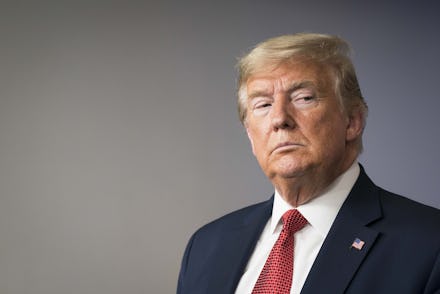Leaked document shows government's plan to reopen country in May

As the coronavirus pandemic continues, people are joking online about their plans for when they're finally allowed outside again. But that time may come sooner than expected: A document obtained by The Washington Post shows that the federal government plans to begin reopening the United States in May. The decision may be rushed due to increase pressure from President Trump.
Titled "A Framework for Re-Opening America", the document was created by the Centers for Disease Control and Prevention and the Federal Emergency Management Agency, the two government agencies primarily tasked with managing the nation's response to coronavirus. The plan provides guidelines for how local and state governments can begin to reopen, saying it would need to happen in phases.
According to the Post, the first of the three phases focuses on preparing the United States for a return to somewhat normal life through a "communication campaign and community readiness assessment until May 1." Then, the manufacturing of testing kits and protective equipment would be stepped up through May 15, along with the disbursement of additional emergency funding. Only after both of those phases are complete will "staged reopenings" begin.
Reopening dates will vary by state, as they'll depend on local conditions. Schools and childcare facilities will be among the first priority to reopen, but states must first show that their incidence of infection is "genuinely low." Nevertheless, the document says, "This framework recognizes that the reopening will entail a significant risk of resurgence of the virus."
If FEMA and the CDC recognize their plan carries a high risk of the virus' resurgence, then why follow through? With a president who very reluctantly extended social distancing to April 30, after first targeting mid-month for getting Americans back to work, the rush to reopen is no surprise.
On Monday, Trump told reporters, "I've been having many discussions with my team and top experts and we're very close to completing a plan to open our country. Hopefully, even ahead of schedule."
The leaked federal plan comes after a bizarre power struggle between Trump and state governors on the West and East Coast. Governors from New York, New Jersey, Connecticut, Rhode Island, Pennsylvania, Delaware, and Massachusetts have formed their own regional pact to coordinate reopening.
According to CNN, the governors have formed a group with an economic expert, a public health official, and the governor's chief of staff from each state. On the opposite coast, the governors of California, Oregon, and Washington announced a similar plan.
Trump responded to these plans with questionable tweets and his longest and angriest coronavirus briefing yet. On Twitter, Trump claimed that the media was creating "conflict and confusion" by saying governors could decide when to reopen their own states. Trump wrote, "Let it be fully understood that this is incorrect."
That same evening, Trump told a reporter, "When somebody is the president of the United States, the authority is total. And that's the way it's gotta be."
With it likely that the federal government will begin to reopen in May, there are a number of glaring issues that must be addressed. For example, the document states, "Coming out of mitigation in a controlled way, with robust monitoring systems in place to contain new cases and outbreaks, will be critical to navigating the next phase of this pandemic."
But how can there be any robust monitoring systems when the federal government has begun cutting funding for coronavirus testing, and there is such a shortage of drugs necessary for treatment that doctors are asking states for their lethal injection supplies? Couple those facts with Trump's halting response to the outbreak already, and it's tough to believe that a nationwide and "robust" system of monitoring will be in place to protect Americans when they're sent back to work.
For the first time ever, this pandemic made all 50 states issue a disaster declaration, and the virus is not yet at its peak. If the country is reopened too early, an already strained medical and economic system will hemorrhage even further.